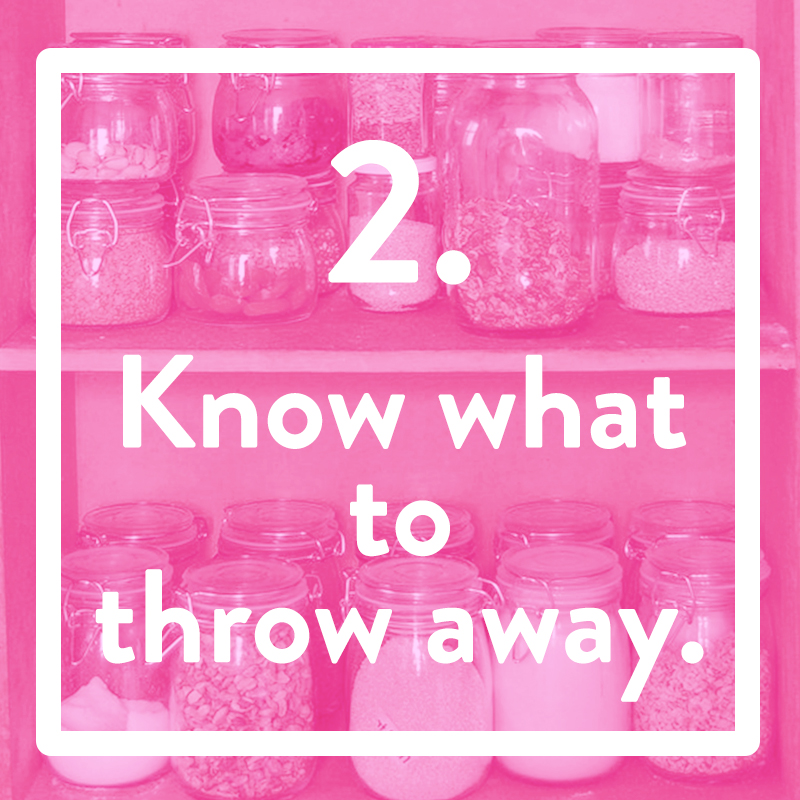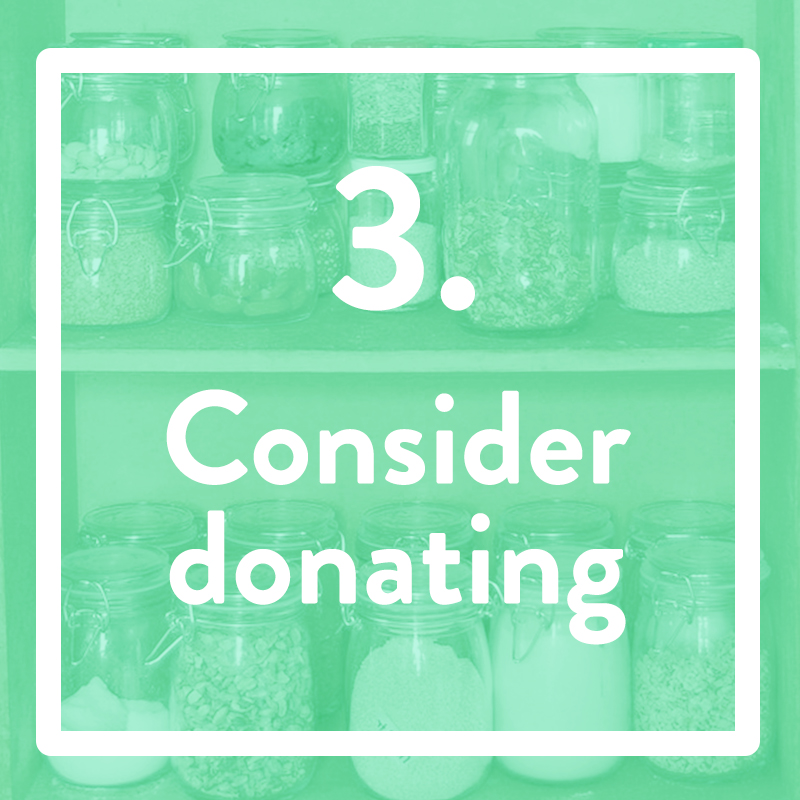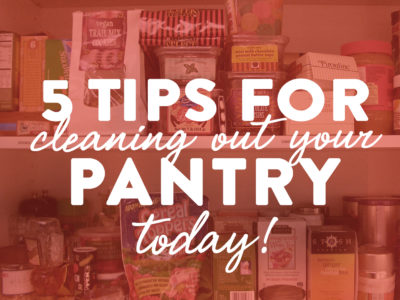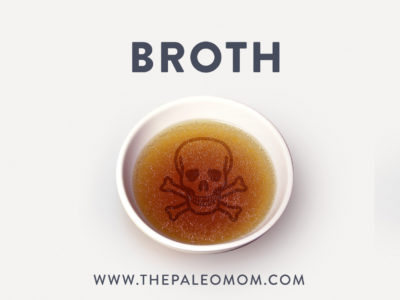When it comes to adopting a healthier lifestyle, our pantry can be our greatest weapon—or our greatest opponent. As someone who can hear food calling my name from the cupboard, I know just how important the contents of our pantries can be in our ability to stick with dietary priorities. Paleo dry goods have come a long way over the last few years, and it’s now easier than ever to replace your favorite Standard American Snacks (see what I did there?) with Paleo alternatives. But it’s all too easy for many of us to hang on to our old favorites and turn to them when times get tough. If you’re battling your pantry, these five time-honored tips will help you out!
Table of Contents[Hide][Show]
 1. Know yourself
1. Know yourself
First, it’s important to identify why we want to start eating healthy food in the first place. This may seem simple, but it can help us determine how we approach the rest of our choices when cleaning up our kitchens. Are we working to heal from an autoimmune disease? If so, eating gluten, dairy or nightshades like potato chips might trigger an autoimmune flare, and that reminder might be enough to help us ditch the junk cold turkey. Are we hoping to help our children’s behavioral issues? If so, throwing away the foods we’ve identified as culprits and replacing them with healthier choices might be a better move.
After we’ve identified the reasons we want to make a change, we can also spend some time asking ourselves which approaches have worked well in the past. Do we work well with cold-turkey approaches (this works best for me!)? If so, we’ll want to throw away or donate everything we don’t plan to eat anymore all at once. Or, does a more gradual approach work better for our family? If so, we can swap out unhealthy staples one at a time to slowly transition to Paleo. And if you need a cold turkey approach but your family needs a gradual approach, read on and see How To Eat Paleo When Your Family Is Not On Board.
If we spend some time thinking over (or even writing down!) the answers to these questions ahead of time, we can save ourselves quite a few headaches in the long run!
 2. Know what to throw away
2. Know what to throw away
Yes-and-no lists (like the one available here) are a great tool when we’re deciding what in our pantry to pitch. Some foods, like raw nuts, olive oil and even certain sweeteners may be totally fine, so there’s value in not sweeping our shelves clean right away. Instead, we can determine what needs to be dumped and whether it needs to be replaced with a healthier alternative. For instance, you may want to replace vegetable oil with olive oil, avocado oil or coconut oil or lard, depending on the application.
To help you identify unwanted ingredients that might be lurking in your foods, see How to Avoid Corn, How To Avoid Added and Refined Sugars, How to Avoid Soy, and How to Avoid Wheat and Gluten.
You may be surprised by the perfectly healthy choices hiding out on your shelves! And, I find that knowing we’re not completely tossing everything can help us feel better about the things we do need to get rid of right away.
 3. Consider donating
3. Consider donating
Many of us struggle with the idea of throwing away food, even if we know it’s not a healthy choice. If this is a struggle for you, I encourage you to donate to a local food bank, a family in need, your place of worship or even your kid’s food drive. While it’s true that some foods simply wouldn’t be helpful if donated (think powdered donuts, cake mixes or cookies) other foods you might pull out during an elimination phase can still be healthful and beneficial for hungry families. These foods might include canned beans, soups or veggies like corn that aren’t strictly Paleo.
As far as the other foods that aren’t worthy of donation or are half-finished, we can follow two approaches. Either we can finish what remains while making other small changes to our diets, or we can consider the health cost in comparison to the cost of that food. If you have $1.55 worth of cookies remaining in that package but know they’ll give you and your family stomach pains or keep you on the sugar roller-coaster, I consider throwing them away worth the cost. However, the former approach is certainly a valid way to make changes, and will absolutely still result in better health in the long run!
4. Swap 1-for-1 
This approach is especially helpful for those of us with young kids or those who feel boxed-in when asked to give up their favorite foods. One-for-one swaps allow us to simply find better versions of our favorites. Examples include the Paleo waffle and pancake mixes from Simple Mills, swapping dark chocolate like Pure 7 for traditional candy bars, or swapping potato chips made in vegetable oil for potato or sweet potato chips from Jackson’s Honest, which are cooked in coconut oil.
I consider these changes lateral shifts. They may not be completely nutrient-dense upgrades—we’re not replacing chips with kale or chocolate with berries—but they are a fantastic move in the right direction. While it may not be a great idea for us to rely on these foods as a major part of our diet, I think they’re all fine in moderation.
 5. Go cold turkey
5. Go cold turkey
This approach works when we know ourselves, and our habits, very well. If we’ve identified that going cold turkey is the approach that yields the best and fastest results, this is likely the best way to tackle cleaning out our pantry. I know, for instance, that this works best for me. When I first went Paleo, it was like flipping a switch. That jolt was enough to completely knock me out of my old habits, and the health improvements I experienced were so drastic that I wasn’t even tempted to go back!
Nutrivore Weekly Serving Matrix
An easy-to-use and flexible weekly checklist
to help you maximize nutrient-density.
The Weekly Serving Matrix is very helpful! I’ve been eating along these lines but this really helps me know where to focus vs. which foods serve a more secondary role. It’s super helpful and has taken a lot of worry out of my meal planning. Thanks!
Jan
If you choose this approach, you can throw out all the old junk in your pantry or donate it, all at once. Then head to the store or do some online shopping to restock with new alternatives. Since you’re going cold-turkey anyway, you might consider going with just the bare necessities (new cooking oils, broth, the barest of snacks) and try cooking most of your food fresh. You’ll notice the biggest difference with this approach, and I think it’s a fabulous way to go!
So, there you have it! Don’t be intimidated by cleaning out your pantry when you’re turning over a new leaf. Just remember there’s no WRONG way to do it, and celebrate your small victories!










